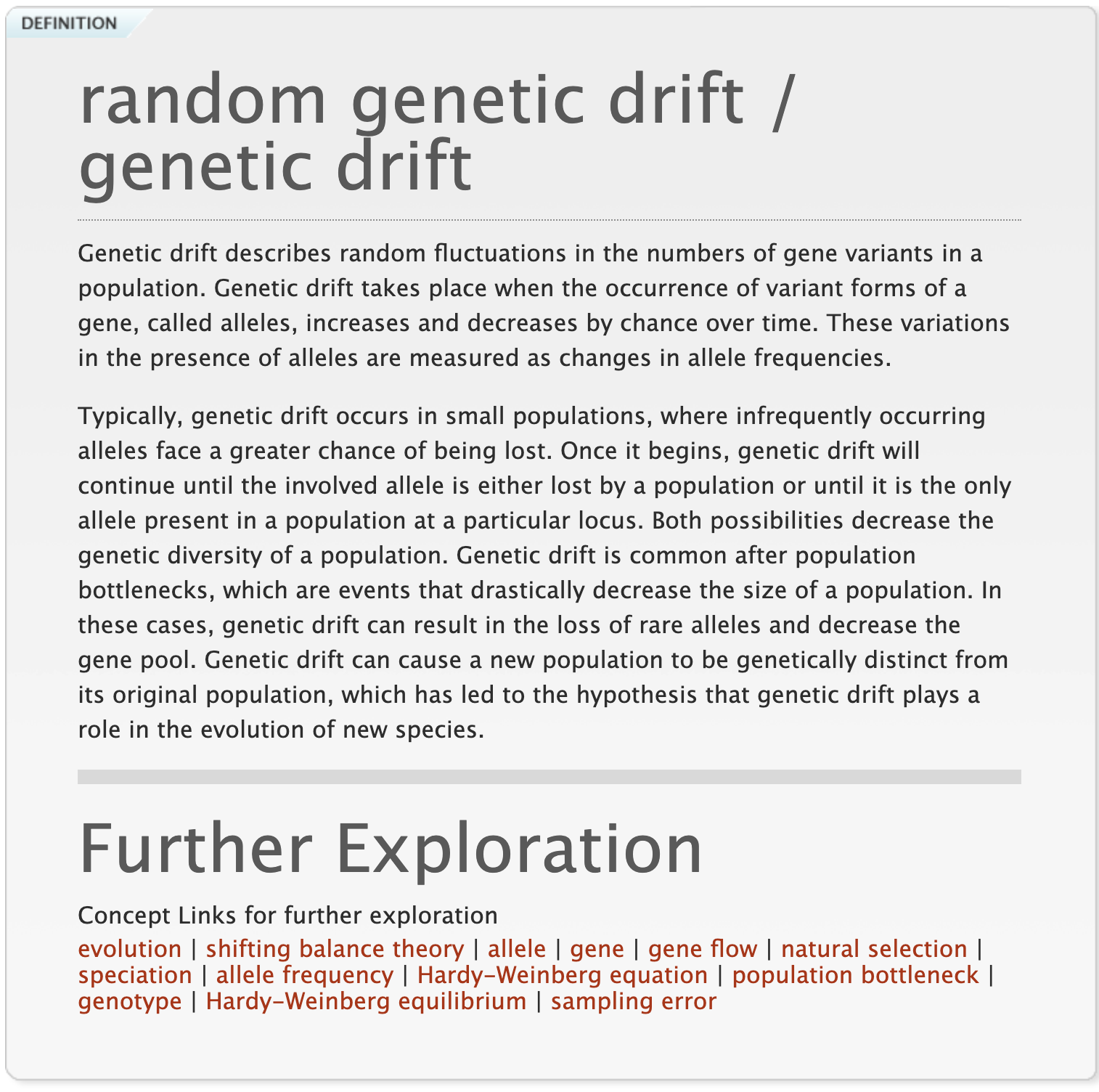Nature website defines concept of genetic drift.
- Type
- Website
- Source
- Nature Non-LDS
- Hearsay
- Direct
- Reference
"Random Genetic Drift/Genetic Drift," Scitable, Nature Education, accessed March 24, 2024
- Scribe/Publisher
- Nature
- People
- Nature
- Audience
- Reading Public
- Transcription
Genetic drift describes random fluctuations in the numbers of gene variants in a population. Genetic drift takes place when the occurrence of variant forms of a gene, called alleles, increases and decreases by chance over time. These variations in the presence of alleles are measured as changes in allele frequencies.
Typically, genetic drift occurs in small populations, where infrequently occurring alleles face a greater chance of being lost. Once it begins, genetic drift will continue until the involved allele is either lost by a population or until it is the only allele present in a population at a particular locus. Both possibilities decrease the genetic diversity of a population. Genetic drift is common after population bottlenecks, which are events that drastically decrease the size of a population. In these cases, genetic drift can result in the loss of rare alleles and decrease the gene pool. Genetic drift can cause a new population to be genetically distinct from its original population, which has led to the hypothesis that genetic drift plays a role in the evolution of new species.
- Citations in Mormonr Qnas
The B. H. Roberts Foundation is not owned by, operated by, or affiliated with the Church of Jesus Christ of Latter-day Saints.

